Professional bean bakers share roasting skills to unravel the mystery of professional coffee roasting.
For professional baristas, please follow the coffee workshop (Wechat official account cafe_style)
Good roasting can strengthen the characteristic local conditions and taste of coffee beans. If the degree of roasting is too low, either too bitter or not ripe, the coffee will lose its taste. Lu Guojie, the owner of pot coffee with rich baking experience, shares his roasting skills without privacy.
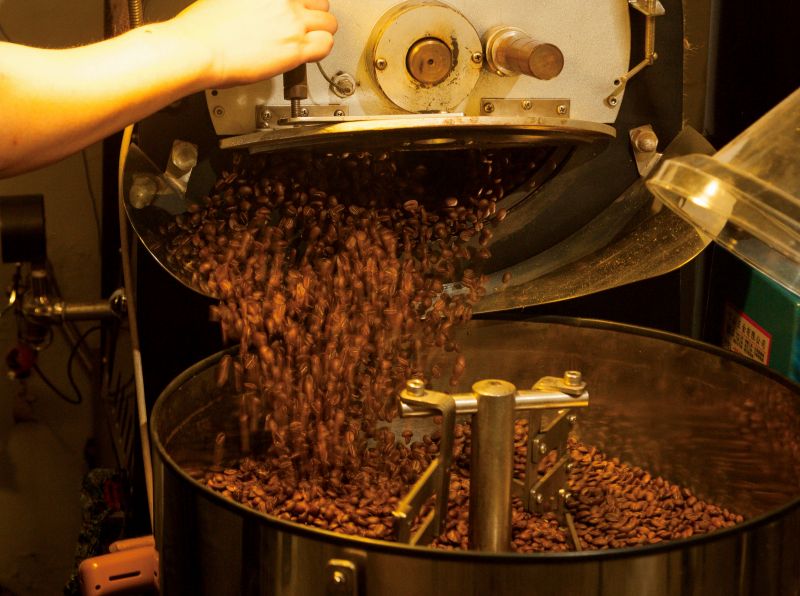
Lu Guojie believes that a good cup of coffee accounts for 80% of the importance of roasting, and because the taste of coffee has been lost during baking, how to grasp the "best baking time" is the key. The so-called best time does not have an objective value, but depends on the flavor you like. The deeper the roast, the better the aftertaste; the shallower the roast, the more aroma the coffee itself retains. The most feared situation is that each kind of coffee beans are roasted into a flavor and lose their characteristics.
In the baking method, Lu Guojie and the habit of baking, that is, each kind of coffee beans are roasted separately, this method and the commonly used mixed roasting can better highlight the distinct characteristics of coffee beans, but mixed baking is convenient to buy time, and the taste of all kinds of beans is more integrated.
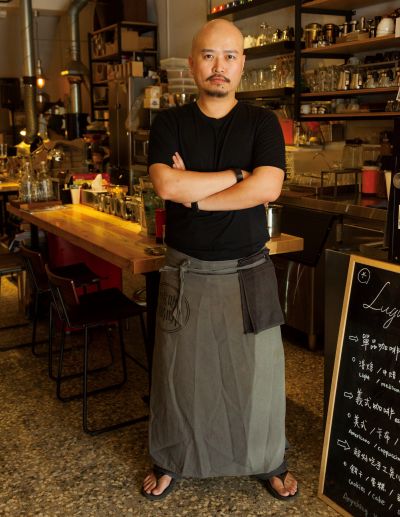
Coffee expert │ Lu Guojie and
Because the university had a chance to taste the delicious taste of Sumatra coffee, he fell in love with individual coffee ever since. In his eyes, the definition of good coffee is the cup that guests like to drink. He personally likes light-roasted coffee because it retains more of its original flavor.
As for baking machines, Lu Guojie currently uses Taiwanese brands and a batch of roasters with a production capacity of up to four kilograms. He said that because of the large model, the firepower or temperature rise of the large machine is slow, but the stability is high, but if you want to bake high-end coffee beans in small quantities and want to experiment with a variety of flavor changes, he will choose a small machine with high flexibility.
In fact, when it comes to this, do you find that whether baking is good or not, of course, technical proficiency and pure maturity will affect it, but I am afraid that whether you have any idea about the taste or not is the ultimate point.
Step by Step: the first step in baking good beans and tasting them
Planned baking can produce the desired taste.
Step1. Machine cleaning
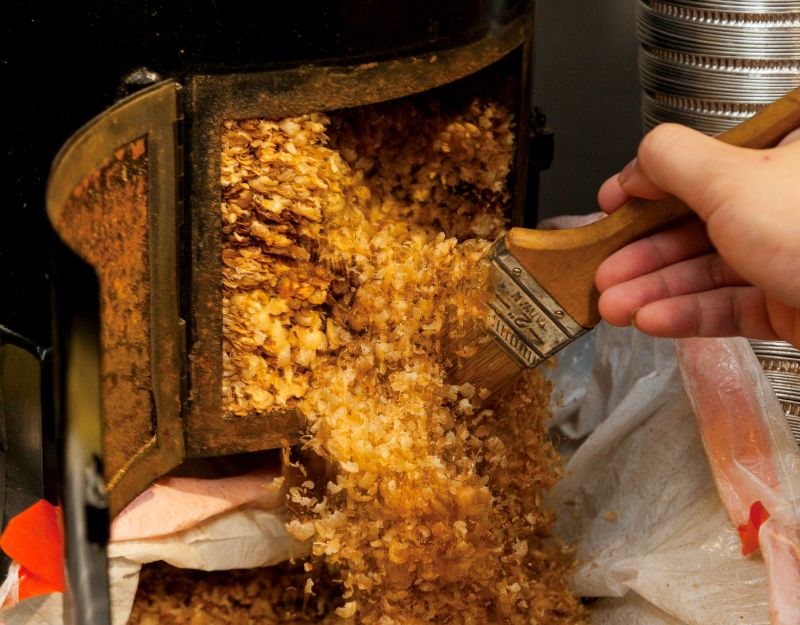
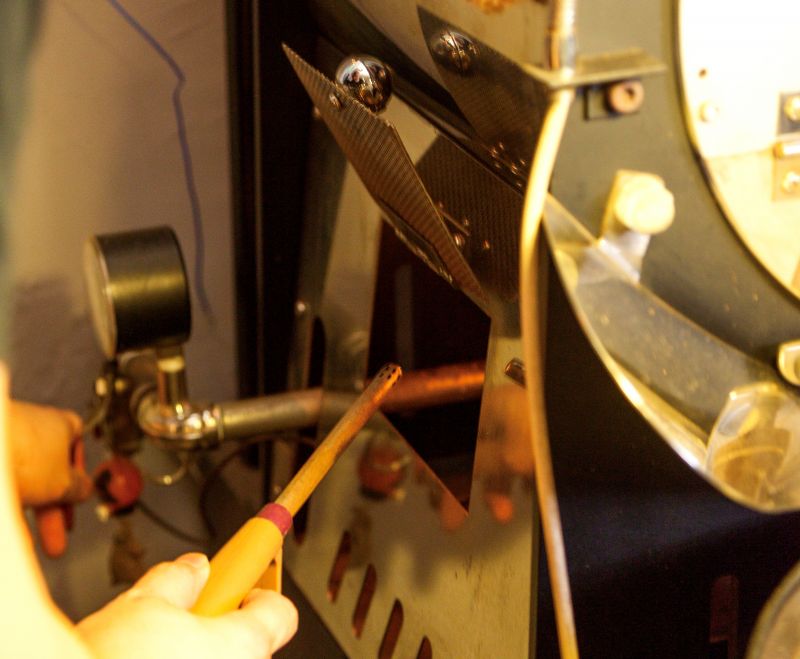
First remove the silver skin produced by the previous baking, which is the film coated in the outer layer of coffee beans. Due to the high baking temperature, Lu Guojie and he will wait until the next baking. In addition, because the temperature is unstable when the machine is empty, he will preheat the machine to 200 degrees, then open a small window to cool down, and then heat the temperature to 200 degrees for temperature stability. And usually he will waste two pots of coffee beans as a hot pot in exchange for subsequent baking stability.
Step2. Confirm the schedule
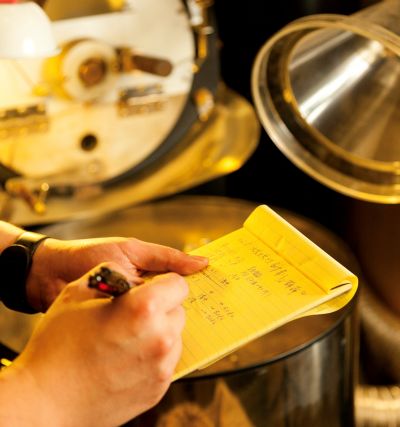
Baking is planned and cannot be done at will. Lu Guojie and he, who has already passed the learning period, will take a class on the variety, depth and quantity of coffee to be baked in order to meet the expected requirements of taste.
Step3.
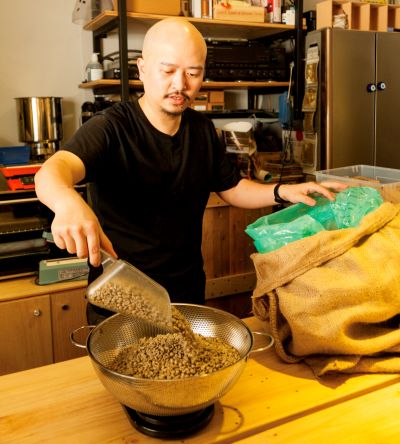
Lu Guojie and the roaster used can bake 4 kilograms of coffee at a time, but after roasting, the coffee will lose up to 20% weight, so a pot can almost weigh up to 4300 grams. Since Lu Guojie bakes an average of 20 pots at a time, he will weigh all 20 pots at once before baking.
Pour beans into Step4
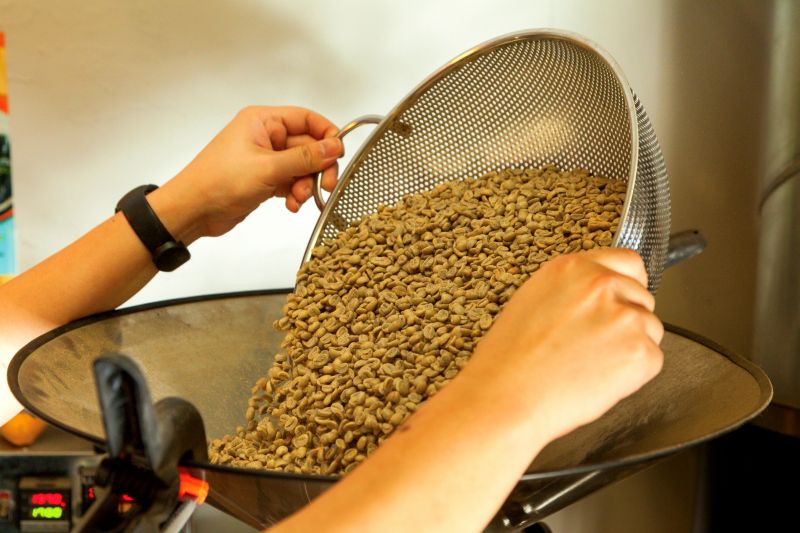
Pour a pot of coffee beans into the roaster and bake them in about 18 minutes from the moment the beans enter the boiler.
Step5. Baking
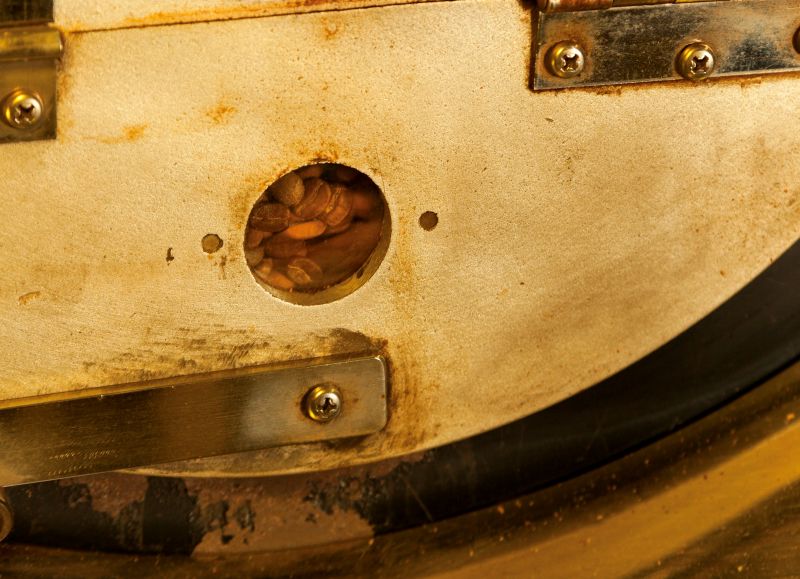
The baking process is mainly Guan color listening. When there is a "first explosion" that sounds a bit like popcorn, it means that the coffee beans are ripe. After 3 or 4 minutes, there will be a "second explosion", and the sound will turn into a patter like burning firewood. After that, the coffee beans will become the usual dark brown. Usually the pot starts after the first explosion, which belongs to shallow culture, and the second explosion ends as deep baking. And between the first and second explosion, for medium-shallow training, this section has a lot of possibilities to be tested.
Step6. Sampling
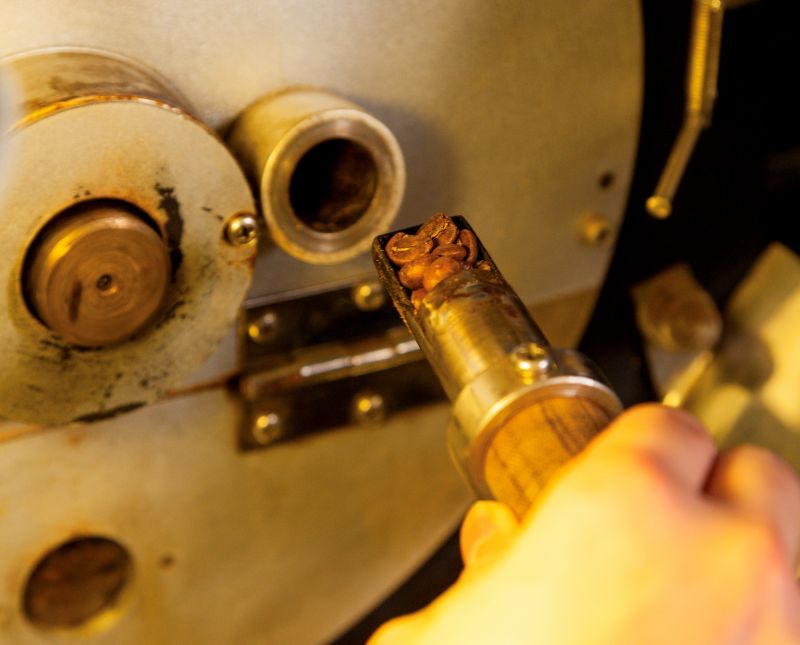
In the baking process, if you are still inexperienced, you can set the time, and then take out the coffee beans with a sampling stick to smell the coffee beans for confirmation, but this will cause the air to run in and cause the temperature to drop, so move quickly, while Lu Guojie and Lu Guojie have already passed this period of study. No more sampling sticks.
Step7. Cooling
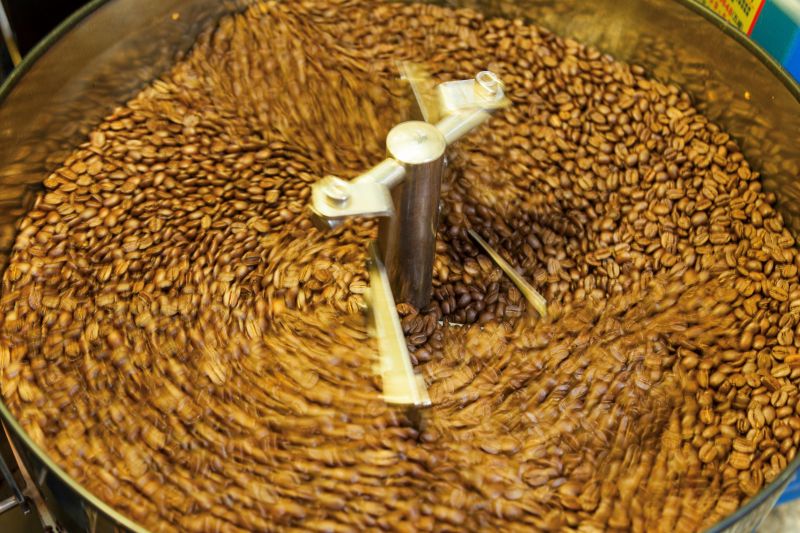
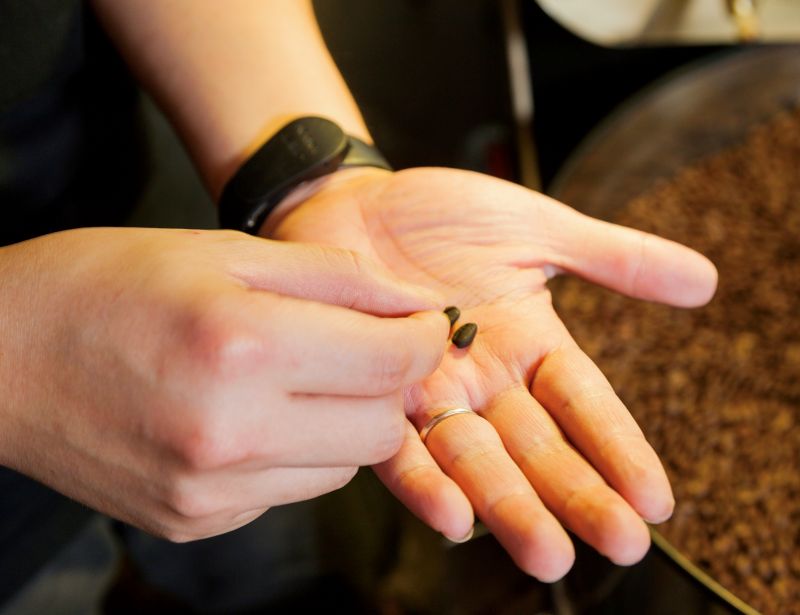
After baking coffee beans, Lu Guojie will let them immediately blow air-conditioning to cool them. If the temperature is not cooled immediately, the remaining temperature will let the coffee beans continue to bake, which will go beyond the original setting of taste. For those who taste turtles, they will feel subtle changes in taste. At the same time, Lu Guojie will pick out bad beans at the same time. He said with a smile that the pot of coffee beans he roasted usually had two bad black beans, probably because somewhere in the machine, the coffee beans were stuck and roasted too black. As long as he picks out those two, he will feel at ease.
Step8
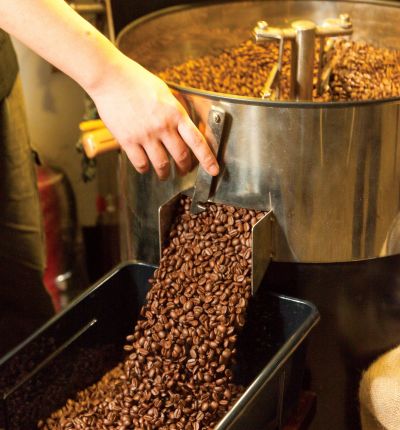
When the coffee beans are cold enough to feel cold, they can be ready to be packed. Because coffee beans exhaust, you don't have to use a sealed box.
Step9. Try drinking
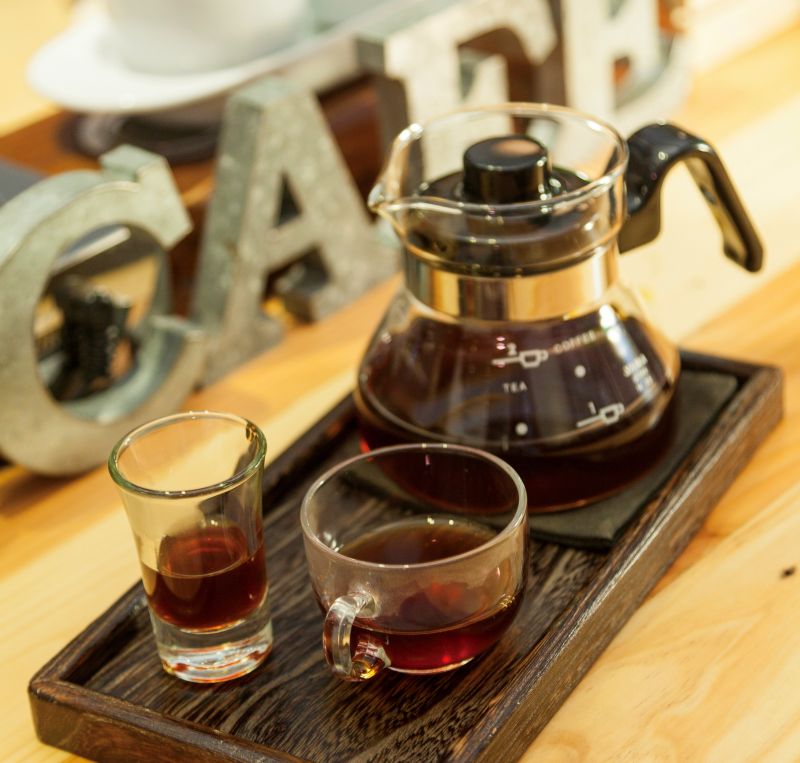
Lu Guojie said that the most interesting thing about testing coffee is to drink it immediately after baking, but there will be a kind of irritable taste at this time, and there will be a sense of astringency after drinking it. Experienced people will automatically ignore this taste and naturally drink coffee. But usually after baking for 4 or 5 days, the smell of hair will disappear.
Last
Coffee roasting has not been introduced into China for a long time, but in recent years, the domestic coffee consumption market has continued to grow rapidly. under the third wave of boutique coffee, the development trend of self-baking, which pursues uniqueness and shows personality, is very rapid. the gap of bean bakers is getting bigger and bigger, which virtually reduces the average professional level of bean bakers. I hope that more exchanges and sharing, common progress and common development is the right direction for the prosperity of the industry.
Important Notice :
前街咖啡 FrontStreet Coffee has moved to new addredd:
FrontStreet Coffee Address: 315,Donghua East Road,GuangZhou
Tel:020 38364473
- Prev

Don't just talk about making coffee, the use of coffee cups is also very important!
Professional baristas exchange please follow the coffee workshop (Wechat official account cafe_style) a cup of delicious coffee, in addition to pay attention to coffee beans and brewing time, used to hold coffee cups and plates are actually very knowledgeable! Holding a cup of coffee is not the only use of a "coffee cup". Using a good coffee cup may also greatly add points to the cup of coffee: make the aroma fuller,
- Next
The method of distinguishing the freshness of cooked coffee beans by four common hand-made coffee beans
Professional barista communication Please follow the coffee workshop (official Wechat account cafe_style) although it is said that hand-brewed coffee is much easier than siphon pot, it is because of its simplicity that the subtle key to delicacy is easy to be ignored. it is only after many people have been brewing it for decades that they find that they have made coffee by hand.
Related
- Beginners will see the "Coffee pull flower" guide!
- What is the difference between ice blog purified milk and ordinary milk coffee?
- Why is the Philippines the largest producer of crops in Liberia?
- For coffee extraction, should the fine powder be retained?
- How does extracted espresso fill pressed powder? How much strength does it take to press the powder?
- How to make jasmine cold extract coffee? Is the jasmine + latte good?
- Will this little toy really make the coffee taste better? How does Lily Drip affect coffee extraction?
- Will the action of slapping the filter cup also affect coffee extraction?
- What's the difference between powder-to-water ratio and powder-to-liquid ratio?
- What is the Ethiopian local species? What does it have to do with Heirloom native species?

